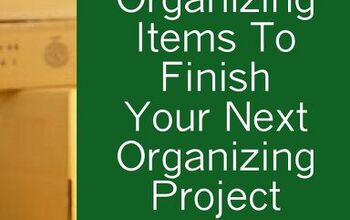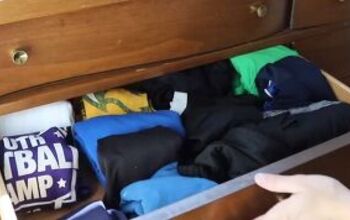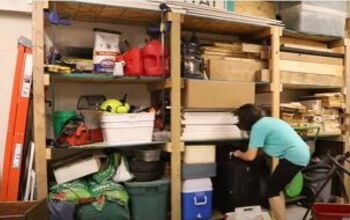Decluttering for Downsizing: How to Simplify Your Belongings

Moving to a smaller space can be a refreshing new start, offering the opportunity to live more simply and with fewer belongings.
However, the process of downsizing can also be overwhelming, especially when it comes to deciding what to keep and what to let go.
Whether you're moving to a smaller home, relocating for a new job, or transitioning to a retirement community, decluttering is an essential step in making the move easier and more efficient.
Here’s a guide to help you simplify your belongings before a move:
Table of contents
1. Start Early and Make a Plan
Decluttering for a move is not something you want to leave until the last minute. Start the process as soon as you know you’ll be moving. Begin by creating a plan that outlines each area of your home that needs attention. Set realistic goals and timelines, breaking down the task into manageable steps. For example, dedicate one week to decluttering your kitchen, another week for the living room, and so on.
2. Visualize Your New Space
Understanding the limitations and possibilities of your new space is crucial. If possible, obtain a floor plan or take measurements of your new home to get a sense of how much space you’ll have. This will help you determine which large items, like furniture or appliances, can be accommodated and which ones need to go. Visualizing how you want your new space to look and function can also motivate you to pare down your belongings.
3. Categorize Your Belongings
When tackling your possessions, it’s helpful to sort items into categories. The most common categories include:
- Keep: Items you use regularly and have a place in your new home.
- Sell: Valuable items that you no longer need but could be sold for extra cash.
- Donate: Items in good condition that could benefit someone else.
- Recycle: Items that can’t be sold or donated but can be recycled.
- Dispose: Items that are broken, worn out, or no longer usable.
By categorizing your belongings, you can streamline the decision-making process and ensure that everything has a designated outcome.
4. Embrace the One-Year Rule
A practical rule of thumb when deciding what to keep is the “one-year rule.” If you haven’t used an item in the past year, it’s a strong indicator that you may not need it in the future. This rule is particularly useful for clothing, kitchen gadgets, and hobby items that tend to accumulate over time.
5. Sentimental Items: Keep the Best, Let Go of the Rest
Sentimental items can be the most challenging to part with. It’s important to approach these with care but also with a discerning eye. Consider keeping only the most meaningful items that evoke strong memories or that you can display or use in your new home. For other sentimental belongings, taking photos or creating a digital archive can help preserve the memory without taking up physical space.
6. Sell or Donate Unneeded Items
Once you’ve identified items you no longer need, consider selling or donating them. Online marketplaces like eBay, Facebook Marketplace, or Craigslist are great for selling larger items or collectibles. Local charities, shelters, or thrift stores often welcome donations of gently used clothing, furniture, and household goods. Not only does this step help you declutter, but it also gives your belongings a second life with someone who can use them.
7. Streamline Your Paperwork
Paper clutter can be a significant burden during a move. Sort through your documents and keep only what is essential, such as tax records, legal documents, and important contracts. Shred old bills, expired warranties, and other unnecessary papers. Consider going digital by scanning important documents and storing them securely on a cloud-based service.
8. Get Help When Needed
Decluttering for downsizing can be physically and emotionally taxing. Don’t hesitate to ask for help. Friends, family members, or professional organizers can provide support and encouragement, making the process less daunting. A fresh perspective can also help you make decisions more efficiently.
9. Take Your Time with Furniture and Large Items
Furniture and large items often pose the biggest challenge when downsizing. Measure each piece and determine if it will fit in your new space. If not, consider selling, donating, or gifting them. Keep in mind that you may need to replace some items with more compact or multi-functional furniture that better suits your new living arrangements.
10. Stay Focused on the Benefits
Throughout the decluttering process, it’s easy to get bogged down in the stress of letting go. To stay motivated, focus on the benefits of downsizing. A smaller home requires less maintenance, can be more affordable, and allows for a more organized, streamlined lifestyle. By simplifying your belongings, you’re creating a space that reflects your current needs and lifestyle, making the transition to your new home smoother and more enjoyable.
Conclusion
Decluttering for downsizing is more than just getting rid of things; it’s about making intentional decisions that align with your future lifestyle. By starting early, staying organized, and focusing on what truly matters, you can simplify your belongings and make your move to a smaller space a positive and liberating experience.






















Comments
Join the conversation